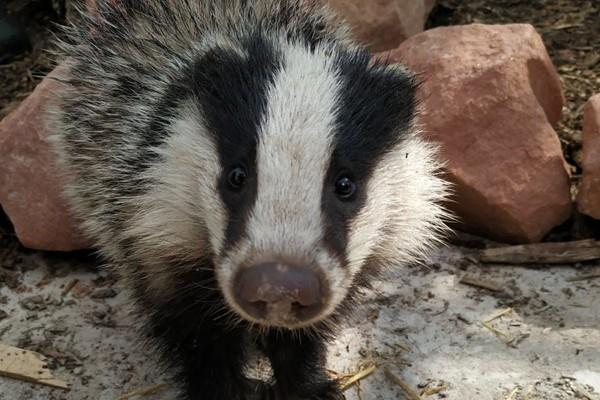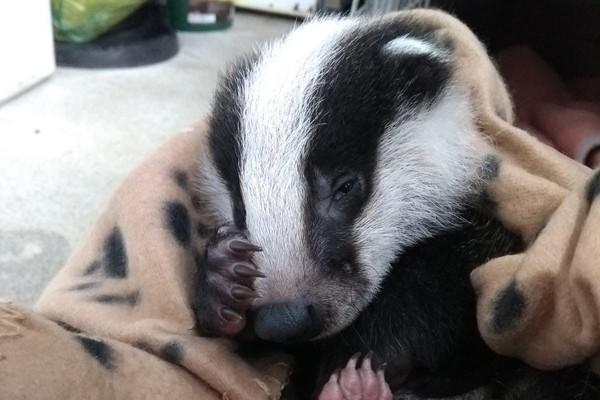
About Badgers – Also Called "Meles Meles"
Badgers often share their burrow with red foxes
The European badger (Meles meles) is widespread in Central Europe and is not classified as endangered here. Although the striking mask-like facial coloration may strongly remind of a raccoon, the badger belongs to the marten family and is the largest representative within it. The head-torso length is up to 90 cm and an adult badger can weigh a good 17 kg.
In contrast to other marten species, badgers do not actively hunt, but rather 'gather' their food. They use a wide food spectrum, which contains either more plant or animal components depending on the season. During the wet spring months, for example, earthworms can make up as much as half of the badger's total diet. During the dry summer and autumn, when these are hardly available, it switches to other food sources. It eats beetles, larvae, berries and fallen fruit, occasionally also the eggs of ground nesting birds, as well as smaller reptiles and rodents.
Did you know…?
What does a badger's way of life look like?
Badgers, which are active at dusk and at night, usually live a solitary life, far away from settlements. They prefer landscapes rich in structures with hedges and woods with a distinct shrub layer, so that they are rarely seen. They are perfectly adapted to spending much of their lives underground. Their short strong legs with broad paws are excellent for digging earth burrows. The claws of the front paws are bent downwards and are even more than twice as long as those of the hind paws, especially for this purpose. The extensive underground tube systems of the badger burrows are usually dug into slopes and not infrequently even shared with red foxes.
Badgers live together in families consisting of the parents, as well as the annual offspring and the young of the previous year. The burrows are often used for many decades, with each generation adding more chambers and passages. This can result in extensive underground passage systems consisting of several levels, with various entrances and exits, as well as passages for air supply. At a depth of about 5 m, there is usually the 'living chamber', which is padded with dry leaves, moss or fern. This material is regularly replaced with new material at the beginning of spring, when the hibernation is over – the badger then does kind of a 'spring cleaning', so to speak.
Correct behavior when finding badgers
Badgers are usually extremely shy. If you see them wandering around during the day, this may indicate that something is wrong. If in doubt, you should definitely contact a wildlife center and not act yourself and try to catch the animal. Badgers are very defensive and can bite extremely hard. Their somewhat clumsy appearance is deceptive!
Badgers at the TIERART Wild Animal Sanctuary
TIERART has repeatedly been able to take in orphaned or injured young badgers within the last years. In 2019, for example, a young badger was discovered disoriented and alone on a busy road. The weakened animal of about 12 weeks was immediately brought to TIERART and expertly cared for. Fortunately, apart from dehydration, no injuries were detected and the little badger recovered quickly. After a few weeks, he was finally released back into the wild.
During rearing, it is very important that the badgers regain their natural shyness before reintroduction in order to avoid later conflicts due to a possible false imprint on humans. It is advantageous to raise them in the company of conspecifics so that the animals can socialize with each other and live their natural behavior in the best possible way. It is also important to provide hiding places where the badgers can be undisturbed. Several specially adapted enclosures are available for this purpose at the TIERART Wild Animal Sanctuary.



